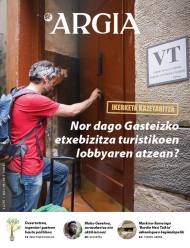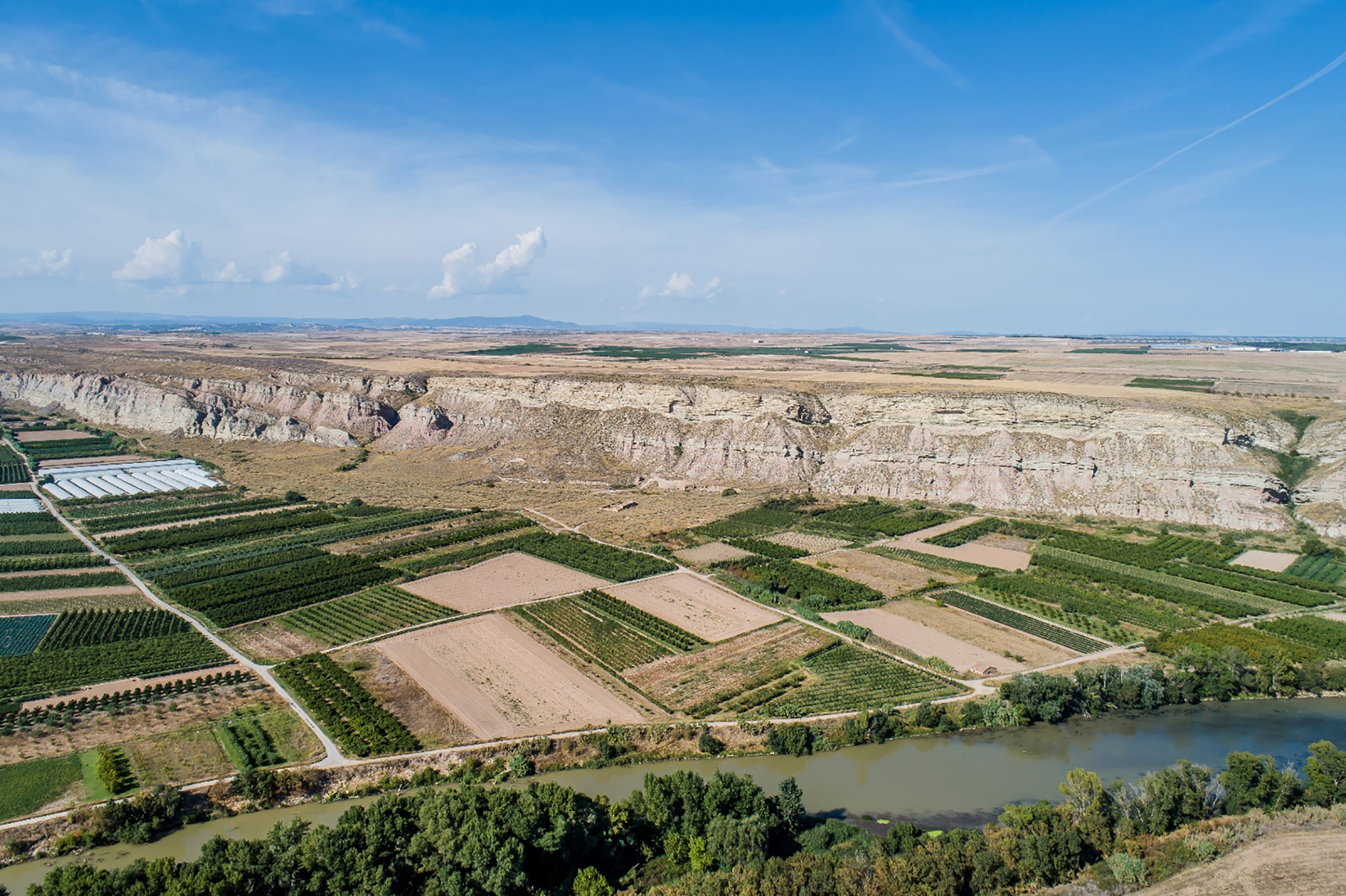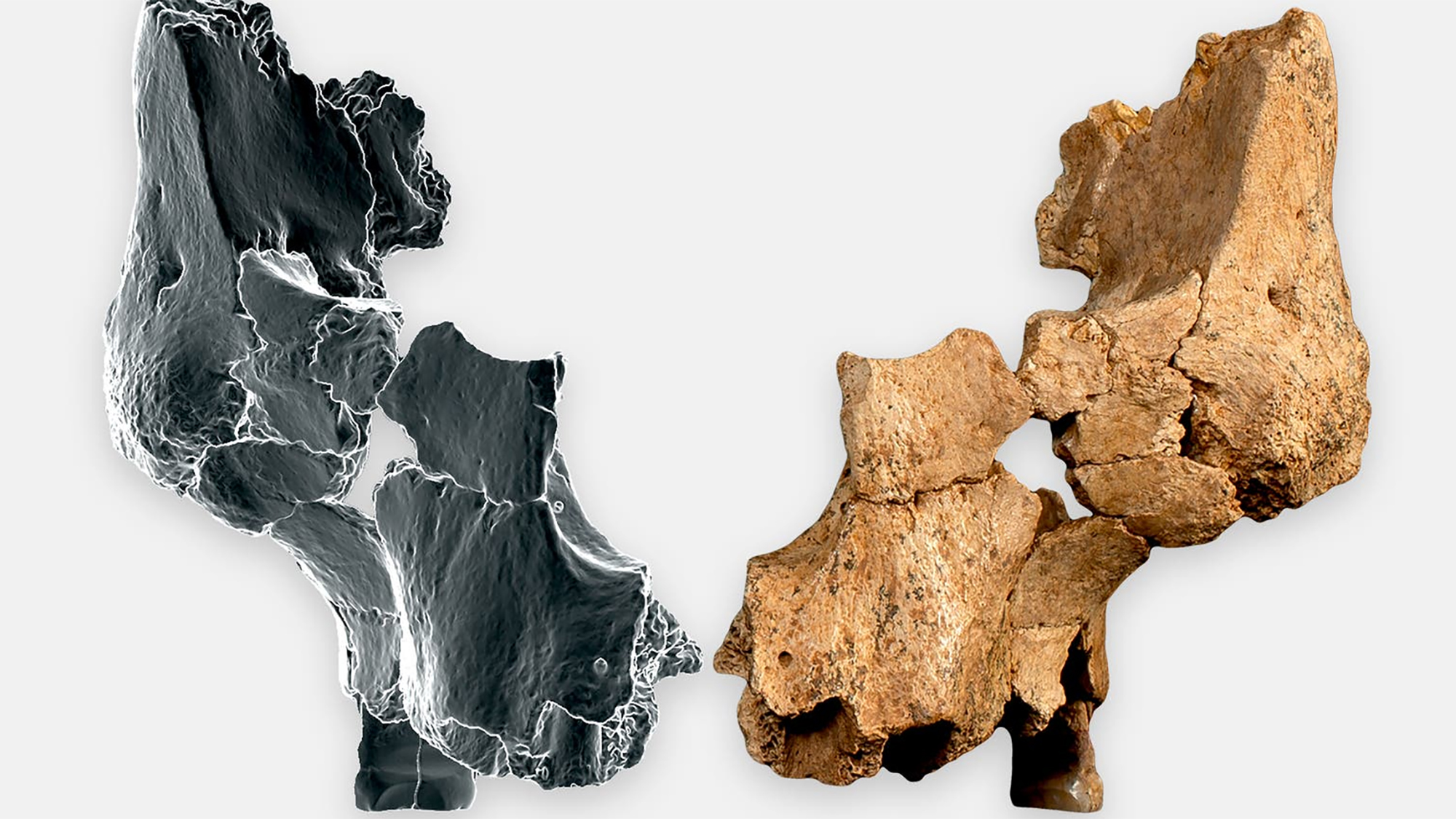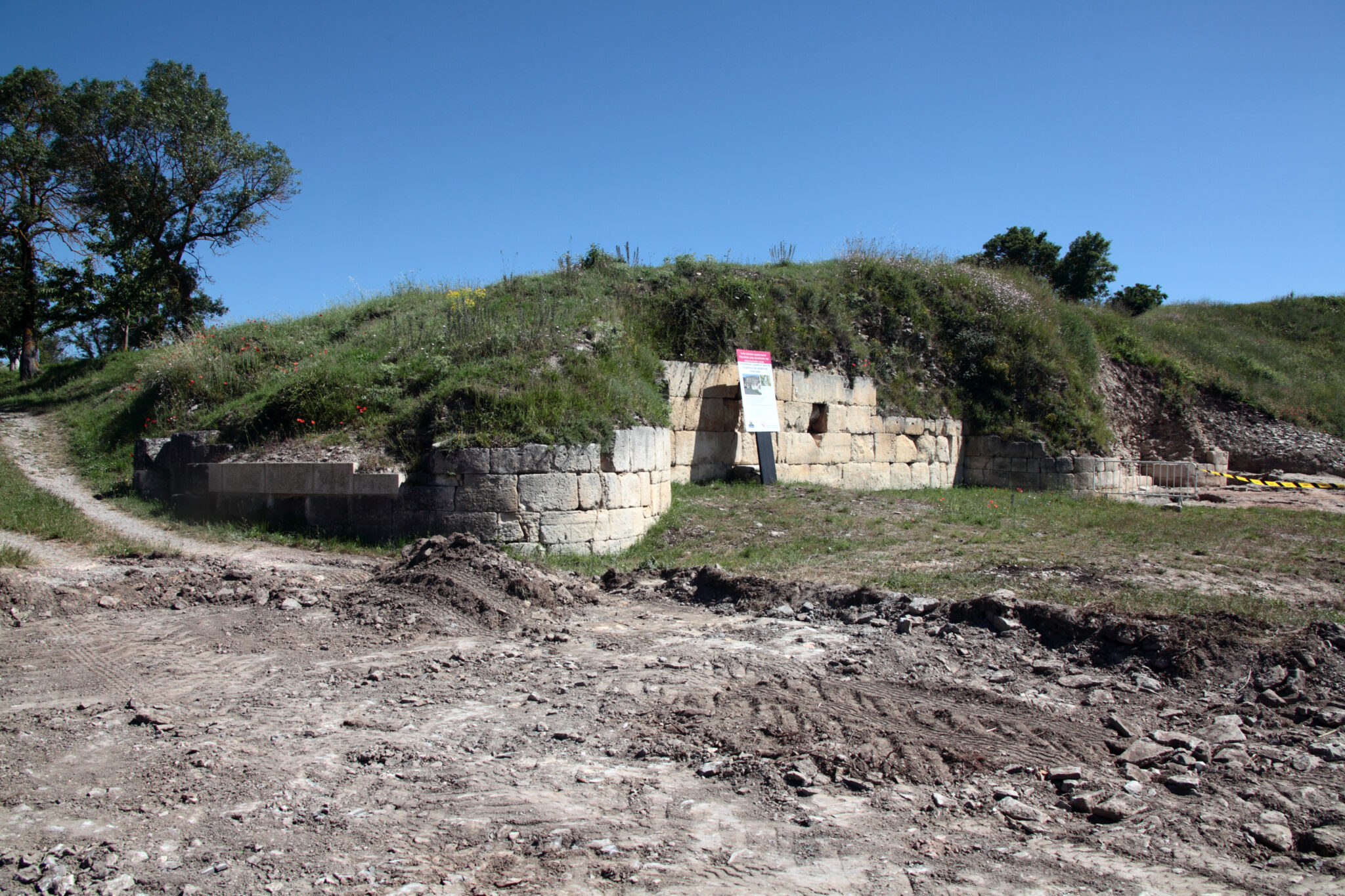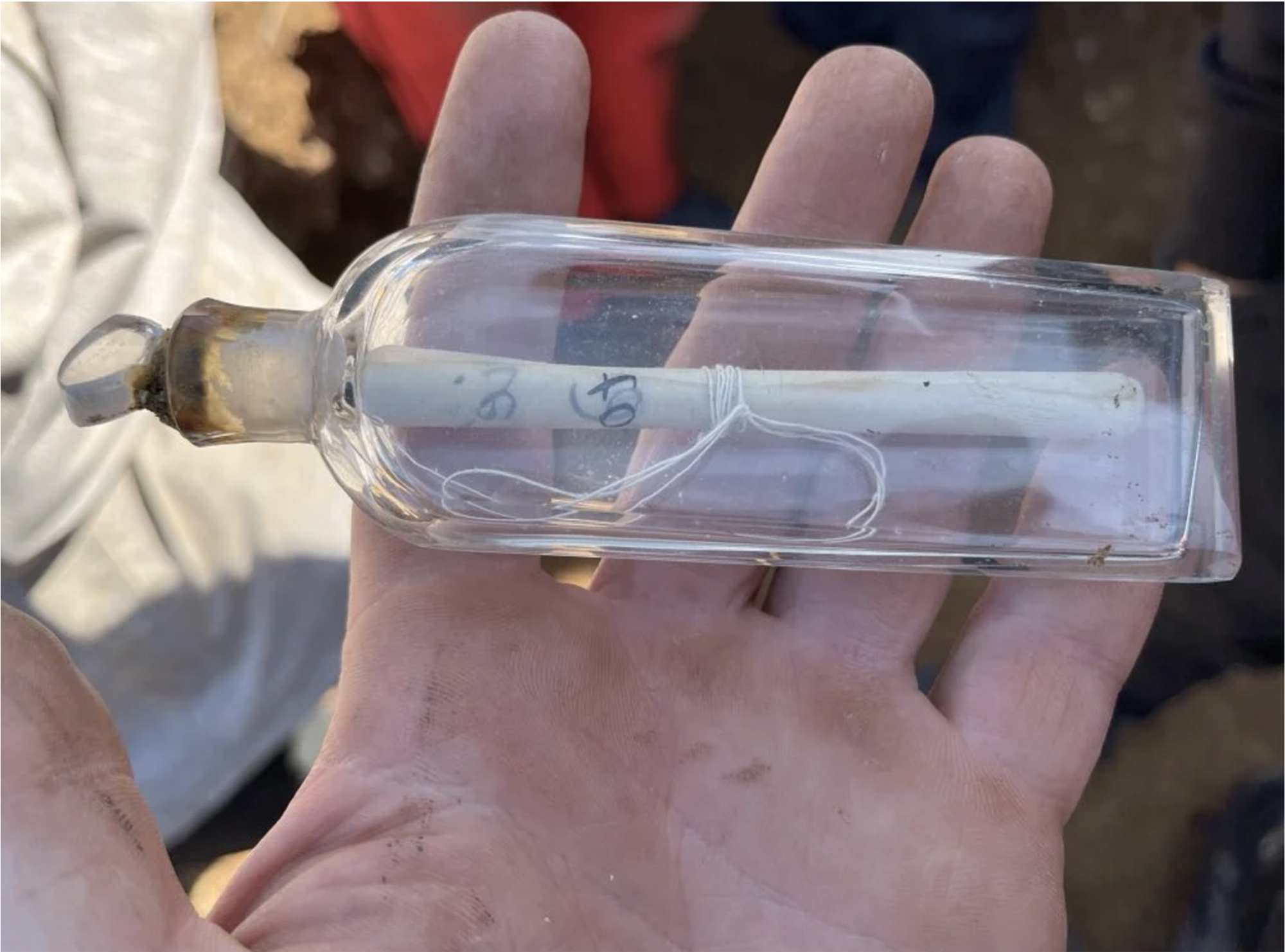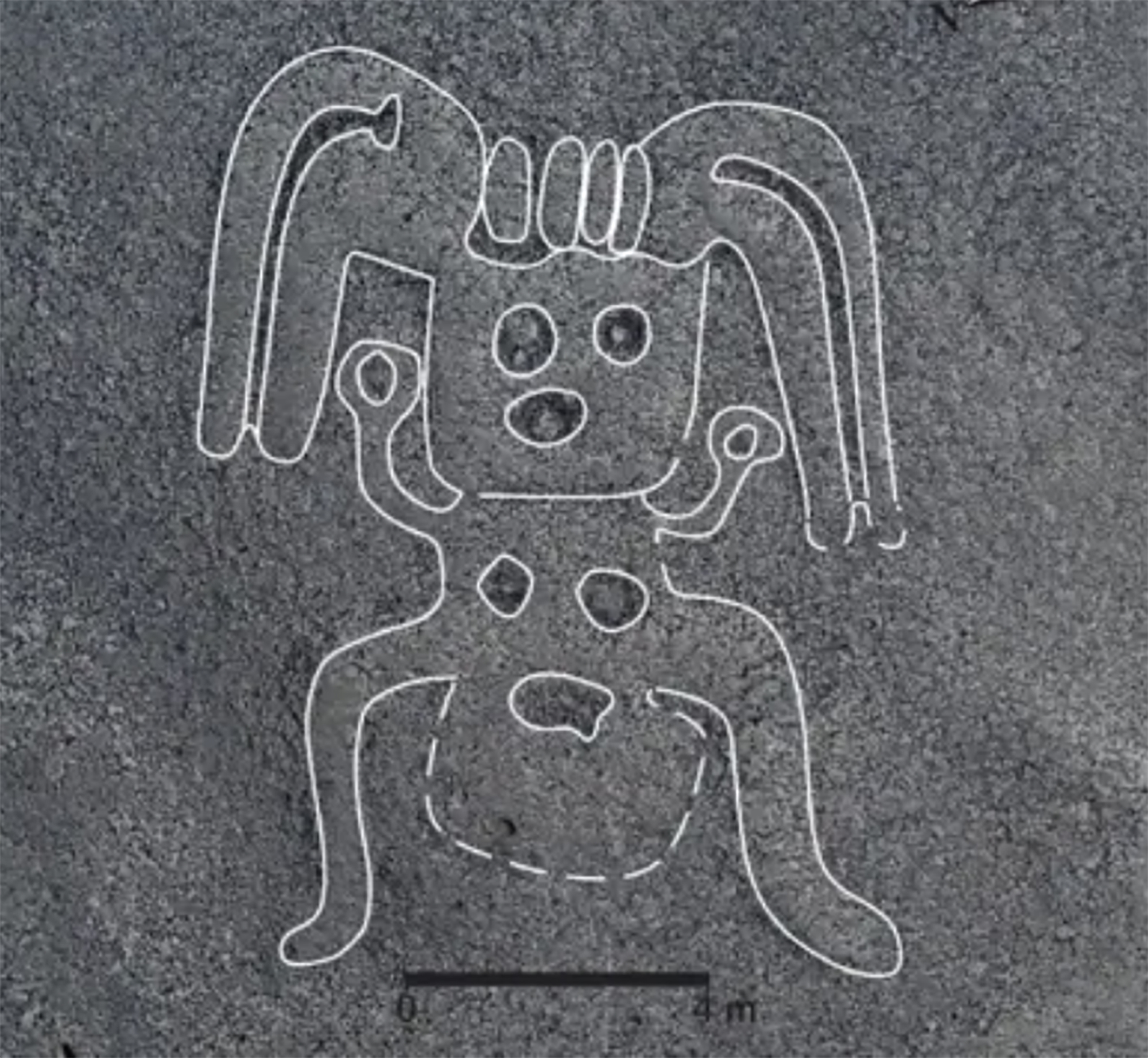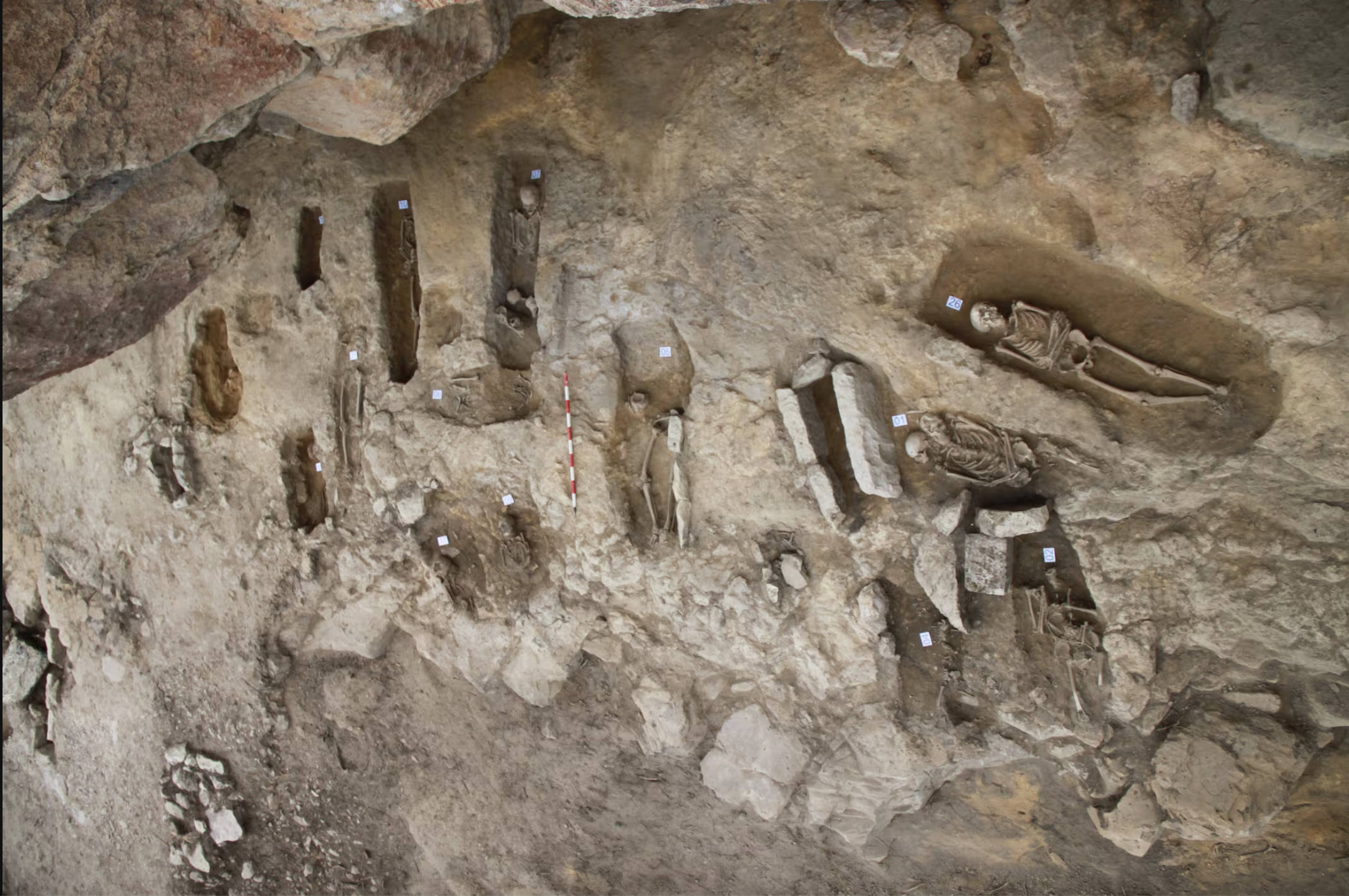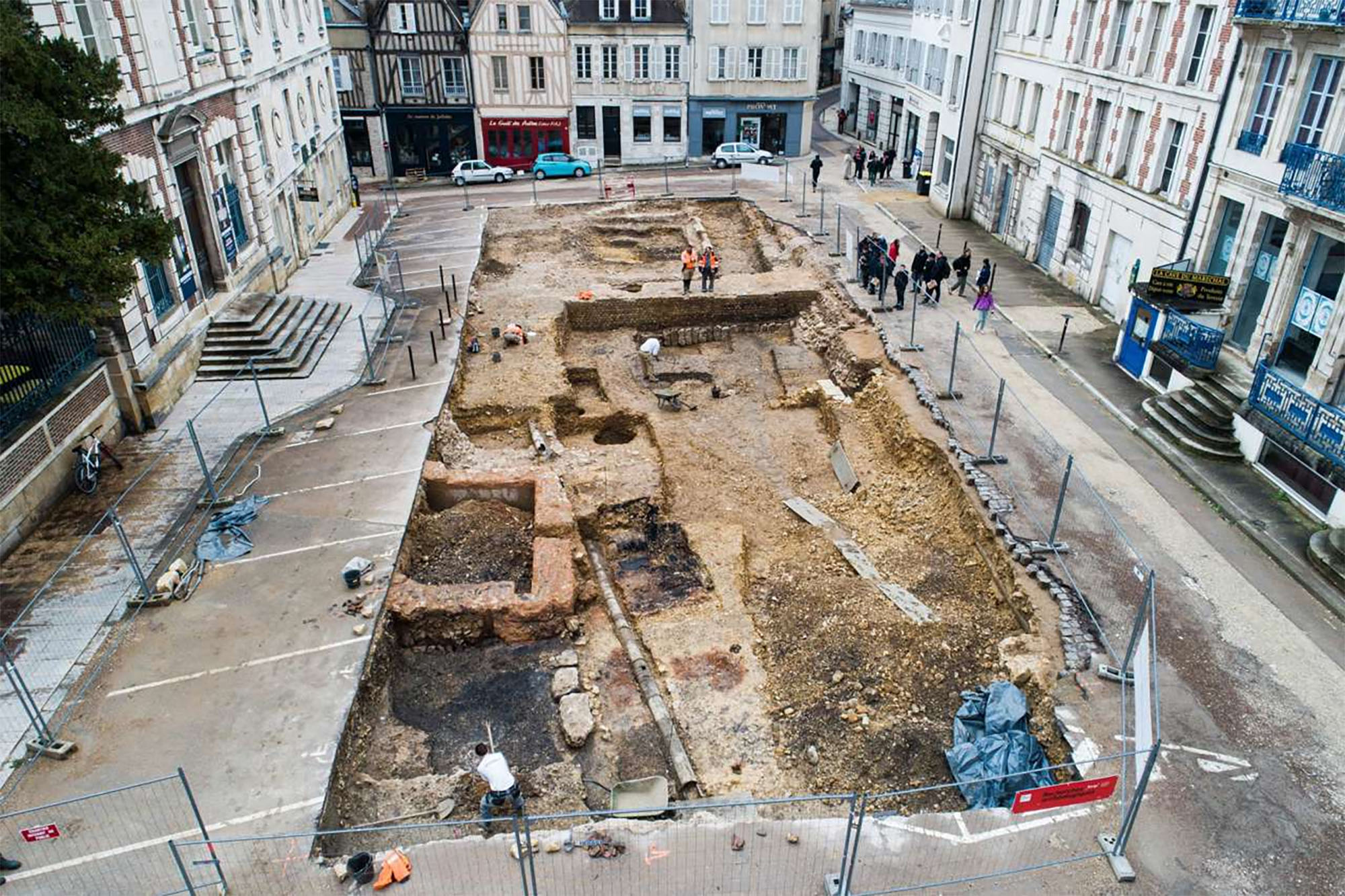"By digging a trench you see the criminal character of the war directly"
- Archaeologist and member of the Research Group on the Built Heritage of the UPV/EHU, Josu Santamarina (Vitoria-Gasteiz, 1993) investigates the traces of the 1936 War in our landscape, from materiality, memory and heritage. In June, he will take part in the second frontline of Markina-Xemein or the Little Gate with the Memory of the Forgotten Association, an initiative that will serve to “put on the skin” the Republicans who fought in these bunkers.

In his doctoral dissertation he is researching the “landscape archaeology” of civil war. What does this word mean?
It's a conception. The landscape is a form of palinpsesto: when the old parchments erased the previous one to be reused, there were traces of that text in different layers. The landscape is also like this, and in archaeology the material layers accumulated over time are analyzed. It is a very holistic conception, not only of the past one wants to know, but also of space. In this case, what is being investigated is the territorial character of the civil war: how the fronts were structured, where the mass graves were found, how the peoples were militarized ...
And what conclusion can we draw in the case of the 1936 War?
It is observed that the oldest archaeological sites were reused: there are war positions that were made on the villages of the Iron Age, in the castles, around the hermites… Control over the territory has always been something wanted by power, and in the modern, total and industrialized war this dynamic also functioned. On the other hand, we know that mass graves were built on the margins of roads, old ice tanks or landfills. I mean, if you want to hide something, you go to peripheral sites.
What do we have in Euskal Herria in relation to other places?
With the exhumations Aranzadi was a pioneer, we have been working with them for twenty years, it is special and we can be proud. I work other spaces, fronts and battlefields, but also centers of repression, such as prisons or forced labor spaces, the latter in Navarre has been extensively investigated.
But here's not a lot of battle like the Ebro, the front went pretty fast, does it mean we have few clues?
In the school textbooks many times the Second Republic and the Civil War get into the same section, but it makes no sense, because it seems that a tragic consequence united, is almost a pseudo-Francoist historiography. In fact, the civil war was a structuring process of Francoism.
The canonical dates are known, the years 1936 and 1937. But more and more historians say it was a concrete phase of war. The summer of 1936 was that of the pillars, a precarious war, with a revolutionary situation in Gipuzkoa, and perhaps similar to the Carlist wars of the 19th century, recycling the spaces of then. Then there was a trench war, such as that of the First World War, and finally, in the Bizkaia campaign, a kind of Congreskrieg or “lightning war” was made with the help of Germany and Italy, an essay of the Second World War. In the performative sense we have all the phases in the Basque Country.
But another new paradigm in archaeology is that of long war. That is, the war did not end either in 1937 or in 1939. Moreover, in fact, the civil war was legally annulled in 1948.
So, was the famous side that said “captive and unarmed” propaganda?
That is why the war councils were constantly being applied to civilians. Until recently, historians have not paid attention to this, because the civil war ended twelve years later and then we entered into another conceptual framework, the law against banditry and terrorism. In the school textbooks many times the Second Republic and the Civil War get into the same section, but it makes no sense, because it seems that a tragic consequence united, is almost a pseudo-Francoist historiography. In fact, the civil war was a structuring process of Francoism.
How do you perceive in the material bases what I'm saying? Through the idea of border. Today, moreover, it is very present: the border is the line that marks the distance between you and the other, in short, the front. When Francoists win, national borders continue to be militarized, and, for example, the enormous P Line of the Pyrenean Bunkers shows that the country was in a permanent war; it was a material mechanism to distinguish the “I” from the “other”, not only from the external enemy, but also from the internal enemy.
.jpg)
That also leads us to realize that the victims of the war were more and more in time, right?
Both the landscape of civil war and the pit and the trench, as well as the prison and the concentration camp. It is necessary to investigate what kind of material limitations occur with respect to the internal enemy, such as repressive centers. Criminal policies were war policies, which aimed to integrate suspects through work and grief in New Spain, because war was not only about bombing and destruction, but also about reconstruction. Franco created an organization known as the Devastated Regions (National Service of Destroyed Regions and Repairs). This institution, with forced labor, building monuments and the like or changing the names of the streets, fossilized in the landscape a narrative of war. In the reconstruction plans, the Civil Guard barracks were a central element, and in Eibar, for example, the new building included troops to shoot. We're going to a more subtle war scenario.
In June, they will take part in Markina-Xemein, together with the Memory of the Forgotten Association, in the second defensive line of the Republicans, what is the basis of this project?
Last year, the members of the UPV/EHU research team collaborated with the Memory of the Forgotten association to complete a memory tour, specifically we developed the topographic documentation of the bunkers of Zapola and Zapolazpi. This year we will be in the Iturreta district: There are three bunkers on the bald, a lookout at the top, a small anti-air shelter, bits of trench… Although the front was quite static, the footprints are somewhat lost, but fortunately they have stayed well on this second line of Markina-Xemein and Etxebarri.
In recent years, pine disease and deforestation have caused serious damage not only to the ecological heritage, but also to the archaeological heritage, while in Balda the original topography has emerged with the felling of pines.
Control over territory has always been something that has sought power, even in modern wars.
And what do you expect to find in it?
This second line is special, I call it “Small Gate,” it has over a dozen bunkers and many concrete structures. Two of them will be excavated. I do not trust materiality very much, because this front fell very catastrophically around 25 and 26 April 1937; there were hardly any direct fights. But bunkers are architecturally valuable because, although they're on the same line, they have different typologies.
This front line was quite unknown, compared to the Verja de Bilbao and others, why?
The mass graves were not known until the 2000s, and the Verja de Bilbao, apart from the idea, knew nothing in a material sense. The same is true of the static front that came from Ondarroa to Ayala, now we are getting to know it. In this sense, the work done by the Memory of the Forgotten is impressive: it has received a lot of testimonies and, to a large extent, thanks to it and to the archiving work, we now know much more. It is true, however, that the second line is not given such importance in the time reports, it does not have a specific name.
To do so much bunker, you've had something ...
Republicans saw this as one of the weakest parts, because they could enter Urdaibai and stay near Bilbao, so they consolidated it. All across the front, we only find so many structures in two places, in Markina and in Ayala. Removed from the Verja de Bilbao, in general little concrete was used, and to a certain extent there would be a certain competition, where will we take the concrete to the front or to Bilbao? British journalist George Steer accused nationalists and military authorities of having “the belt mentality” of having placed too much trust in the fence.
Thanks to the initiatives of the memory associations, they say that in recent years the traces of civil war have been “patrimonialized”, does it explain it better?
These associations have musealized and ordered various goods: they were the first to arrive, then we have come the others. Archaeologists try to do pedagogy to ensure the scientific treatment of fingerprints, and now these two worlds come together. On the one hand, the resident work of the associations, with a collective and committed sense, and on the other hand, the methodology that we offer those of us at the university or in other scientific associations. Then there is an institutional setting, such as the Gogoratuz Institute, which offers opportunities, but also has its own fluctuations with the associations… and that is normal, they have come the last ones and are still learning.
.jpg)
From the point of view of information and awareness, what can initiatives such as Markina-Xemein offer?
In my view, they are important because they are against the hegemonic Francoist discourse. When you dig a trench, there is no rebisionism or negationism if you want to use the word of fashion: there you see live the cruelty of war and the criminal character, there is no march of triumphs of triumphant Spain. The bullets are the positions of the losers and offer us the possibility of placing them on their skin.
They are suitable places for teaching and pedagogy in historical memory or, in what is now known as democratic memory. Student visits are scarce. I in Álava, on the excavations of Monte San Pedro have made a great effort to be with the students, but it is still in the hands of the teacher's initiative.
Therefore, another view that is not shown by the Francoist crosses.
There is debate about what to do with the Francoist symbols, which are also the winners' speech. I believe that it is important to draw on the experience of the losers to deal with it. He would put the clumsy inside him, even if they are pieces of concrete, archaeology does not seek the monumental character, but to know the life and history of ordinary people.
In recent years you have been leading the excavations of Mount San Pedro and you have achieved spectacular results.
It is located between San Pedro Orduña and Amurrio, with many other names: Azkuren, Beratza…– is a place with a very high degree of conservation, due to mild socio-economic practices. As a result, we have recovered 4,000 pieces, in collaboration with students and councils of the UPV/EHU.
"We have to value the marginal and peripheral places, spaces forgotten by capitalism, and that's why they have so many stories."
Has it been like archeologically turning the pages of a war journal?
Yes. The history of the winners has been mystified – at the same summit in San Pedro we have a cross built in his honor, although there is no symbolism now – and in contrast there is the history of the losers, but it is also not worthy of mystification: we have found many bottles that show that alcohol consumption was high. They probably drank to fight fear, because they had to follow a virility pattern, that of the warrior. Cans of food, ammunition of many gauges, everyday objects… It is the kingdom of anonymous archeologies, but we have also found an identifying veneer of a Basque who subsequently suffered the Holocaust.
And you can also read this story by moving it to the scale of the landscape. For example, they tried to build a 50-meter tunnel to get through the top underground, but they didn't end in time.
What happened?
They attacked him in a very violent but absurd way. It was a miniature demonstration of the Second World War: explosions, craters… we also found fragments of the skull of a person disintegrated with explosives. It's been like making the autopsy of a battle. It is said that the warriors and militiamen fled, saying that Lehendakari Agirre himself wrote a letter as “we cannot lose St. Peter”. But it's easy to say it from the office without seeing the effects left by the most advanced military technology of the time.
What subjects can generally be taken from places like San Pedro or Balda?
Because we have to value marginal and peripheral places, which is why they have so many stories. This has to do with the way capitalism manages territory: archaeologists typically look for the spaces that it has left behind. This heritage has so far been limited to the private area, counting what happened in the kitchen of your amama... But when it's been over 80 years, it's time to make it public, not in an institutional sense, but collectively.
Joan den urtean Markina-Xemeingo bigarren guda-lerroko memoria ibilbidea (MX-2) aurkeztu zuen Ahaztuen Oroimena elkarteak, Alpino Mendizale taldea eta udalarekin batera osatua, “SL” herri ibilbideen barruan. Orain, ekainaren 5ean, MX-3 ibilbidea aurkeztuko dute, Iturreta auzoan Baldakotxuntxurreko bunkerretan barrena doana. Aurkezpenean, ekainaren azken bi asteburuetan EHUko ikasleekin egingo dituzten indusketa arkeologikoen berri ere emango dute, eta horretarako Josu Santamarinak hitzaldia eskainiko du (goiko irudian, bunker batean lanean). Gainera, indusketen azken egunean bisita gidatua antolatu dute: “Lanak ezagutu, azalpenak entzun eta jakinmina asetzeko aukera izango dugu”, azaldu dute elkartetik.
1936ko urrian, gudari eta milizianoek lortu zuten Emilio Mola jeneralaren erasoaldia gelditu eta frontea Bizkaia eta Gipuzkoa artean egonkortzea. Baina Markina-Xemein eta inguruetako posizioak ahulak izaki, lerrokatutako bunkerrez osaturiko bigarren fronte bat eraiki zuten, Rikardo Bastida Lezea arkitektoak diseinatua. Lerro hori ez zuten erabili, faxistek Oiz mendian frontea gainditzea lortu zutelako 1937ko apirilaren 26an, Gernika bonbardatu zuten egun berean. Ahaztuen Oroimenak bildutako testigantzei esker, azpiegitura horiek aurkitu eta balioan jartzen ari dira orain.
Aranzadi Zientzia Elkarteko Etnografia Sailaren zuzendari berria da Maite Errarte Zurutuza (Beasain, 1995), urrian Fermin Leizaolaren lekukoa hartu ondoren. Kultura materiala aztertzen jarraitzeko beharra azpimarratu du, gizartearen memoria eta bizimodu aldaketak erregistratzeko... [+]
Atapuercako aztarnategian hominido zahar baten aurpegi-hezur zatiak aurkitu dituzte. Homo affinis erectus bezala sailkatu dute giza-espezieen artean, eta gure arbasoek Afrikatik kanpora egindako lehen migrazioei buruzko teoriak irauli ditzake, adituen arabera.
Martxoaren 30erako Iruña-Veleia martxan, SOS Iruña-Veleia eta Euskeraren jatorria elkarteek manifestaziora deitu dute, Aski da! Argitu, ez suntsitu lelopean. Azken bi urteetan "hondeatzaileak sistematikoki eremu arkeologiko oso aberatsak suntsitzeko modu... [+]
Ethiopia, 24 November 1974. Lucy's skeleton was found in Hadar, one of the oldest traces of human ancestors. The Australian hominid of Australopithecus afarensis is between 3.2 and 3.5 million years old.
So they considered it the ancestor of species, the mother of all of us. In... [+]
While working at a site in the Roman era of Normandy, several archaeology students have recently made a curious discovery: inside a clay pot they found a small glass jar, of which women used to bring perfume in the 19th century.
And inside the jar was a little papelite with a... [+]
A team of researchers led by the Japanese archaeologist Masato Sakai of the University of Yamagata has discovered numerous geoglyphs in the Nazca Desert (Peru). In total, 303 geoglyphs have been found, almost twice as many geoglyphs as previously known. To do so, researchers... [+]
Treviño, 6th century. A group of hermits began living in the caves of Las Gobas and excavated new caves in the gorge of the Laño River, occupied since prehistory. In the next century, the community began to use one of the caves as a necropolis. In the 9th century they left the... [+]
On August 1, a dozen people from the family were in Aranguren. Two young people from Aranzadi made firsthand the excavations and works being carried out in Irulegi. This visit is highly recommended, as it reflects the dimension of the work they are doing.
Halfway, at the first... [+]
In the desert of Coahuila (Mexico), in the dunes of Bilbao, remains of a human skeleton have been found. After being studied by archaeologists, they conclude that they are between 95 and 1250 years old and that they are related to the culture of Candelaria.
The finding has been... [+]
The Roman city of Santakriz is an impressive archaeological site located in Eslava, near Sangüesa. Apparently, there was a fortified people of the Iron Age, and then the Romans settled in the same place. Juan Castrillo, himself a priest of Eslava, gave the site for the first... [+]
This winter the archaeologists of the INRAP (National Institute of Preventive Archaeological Research) have found a special necropolis in the historic centre of Auxerre (French State), a Roman cemetery for newborn babies or stillbirths. - Oh, good! The necropolis used between... [+]









